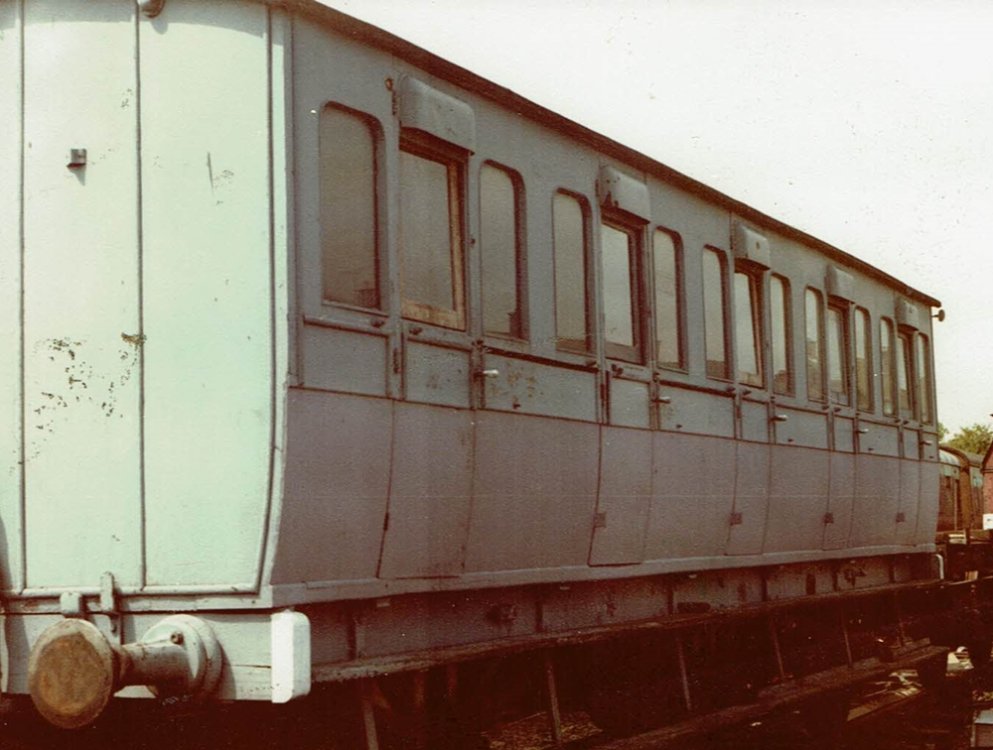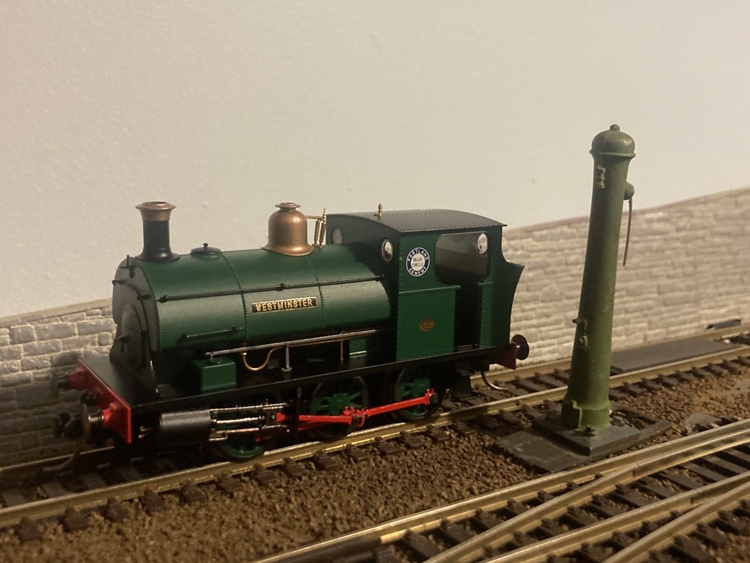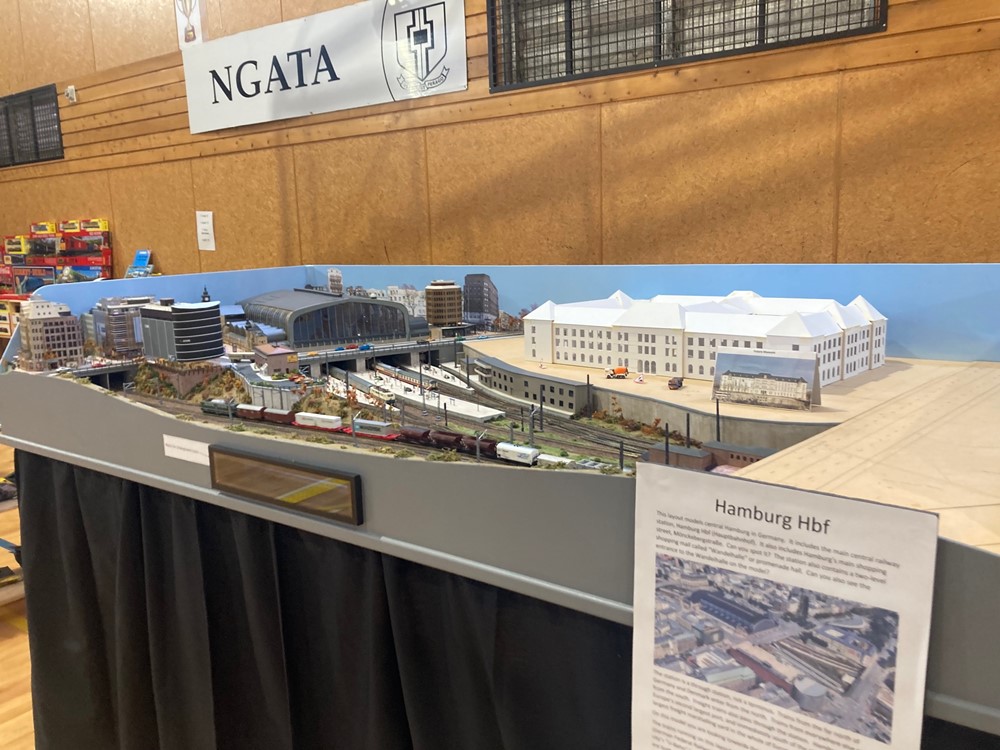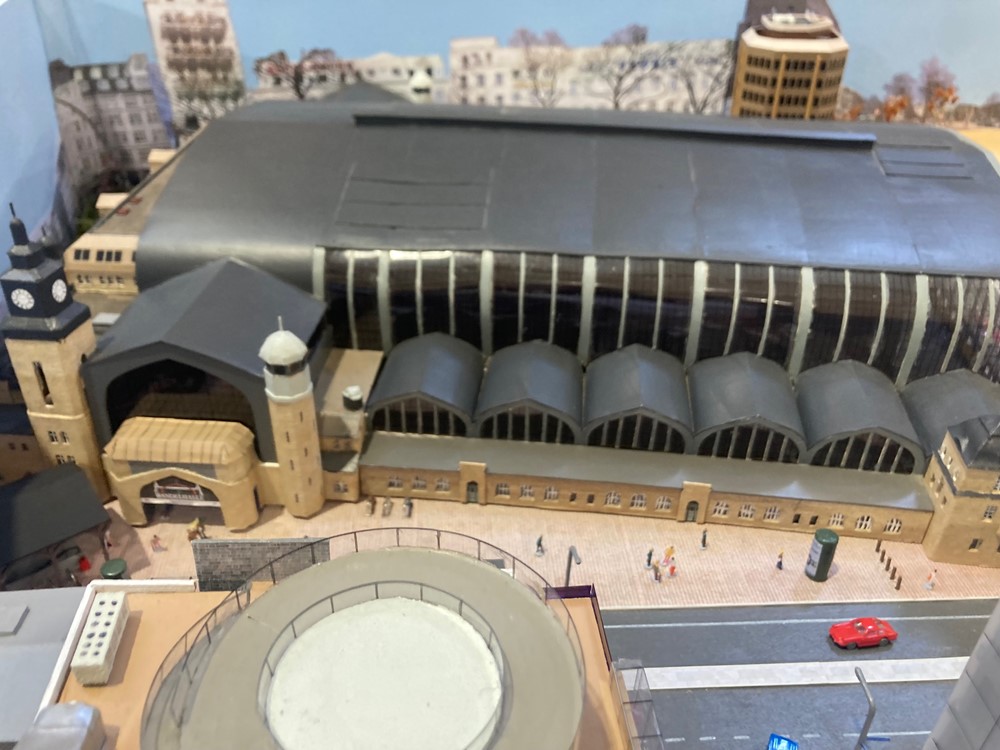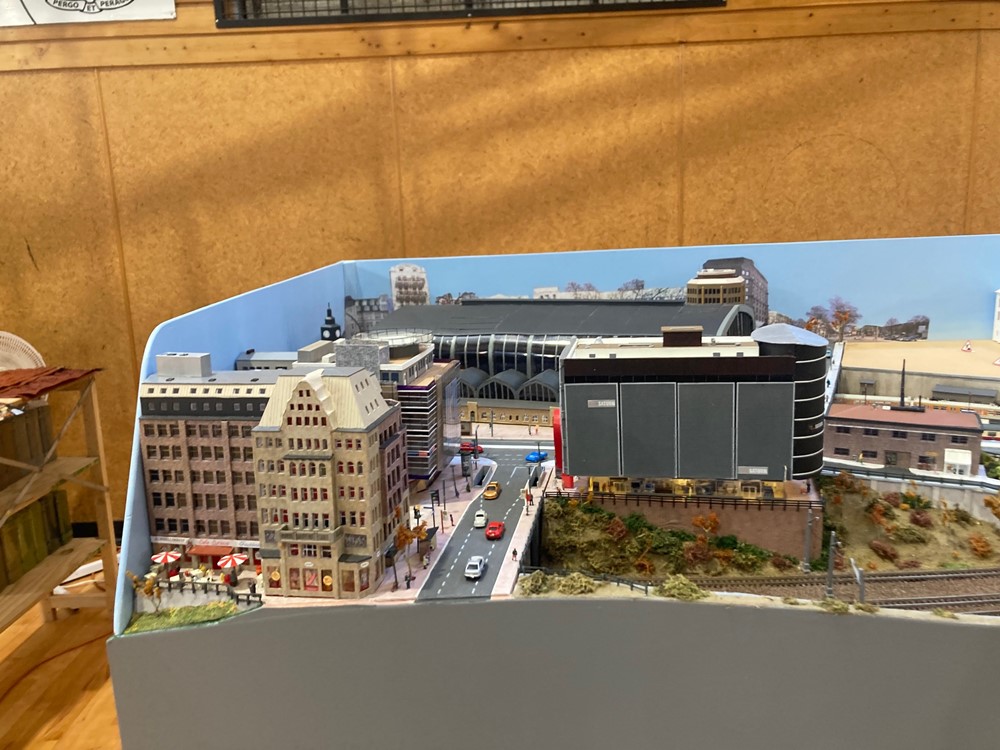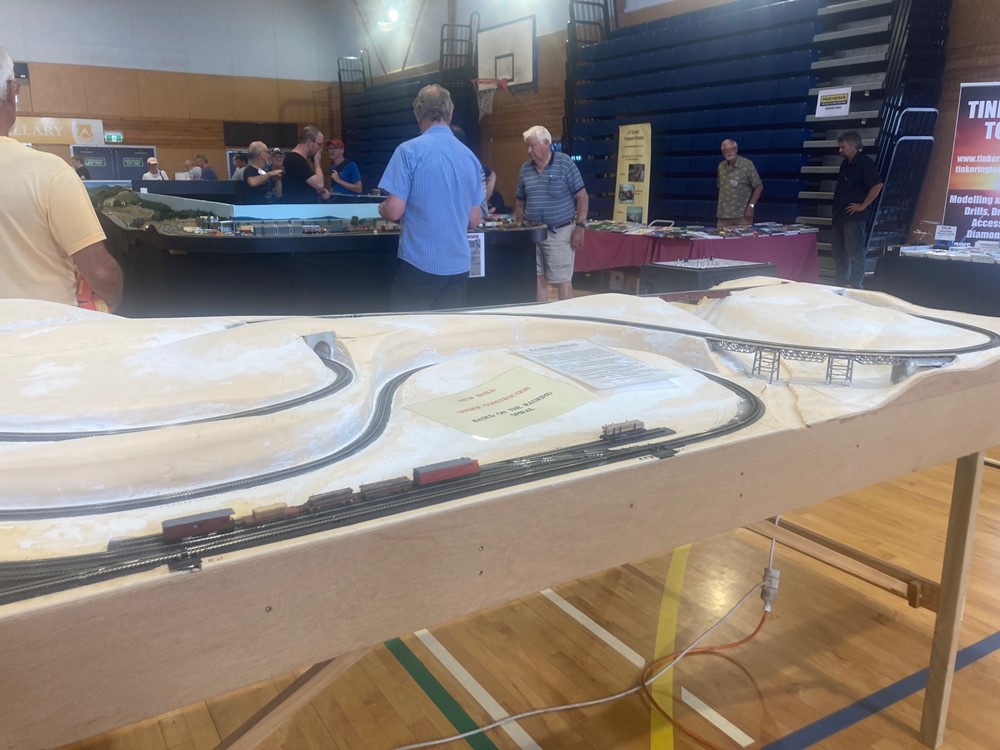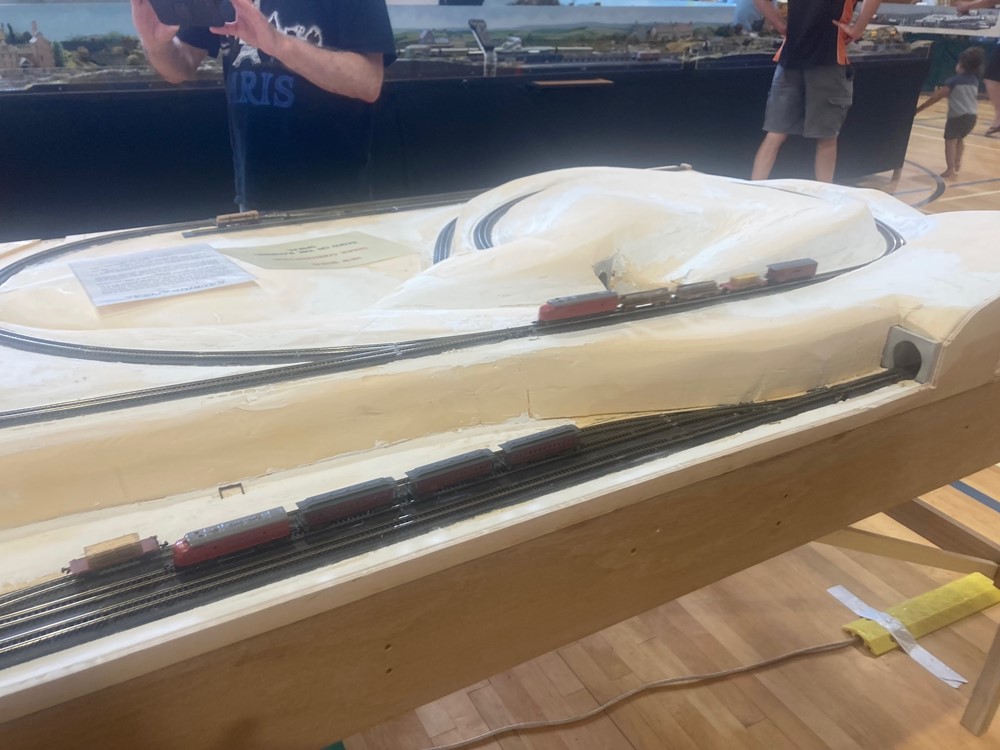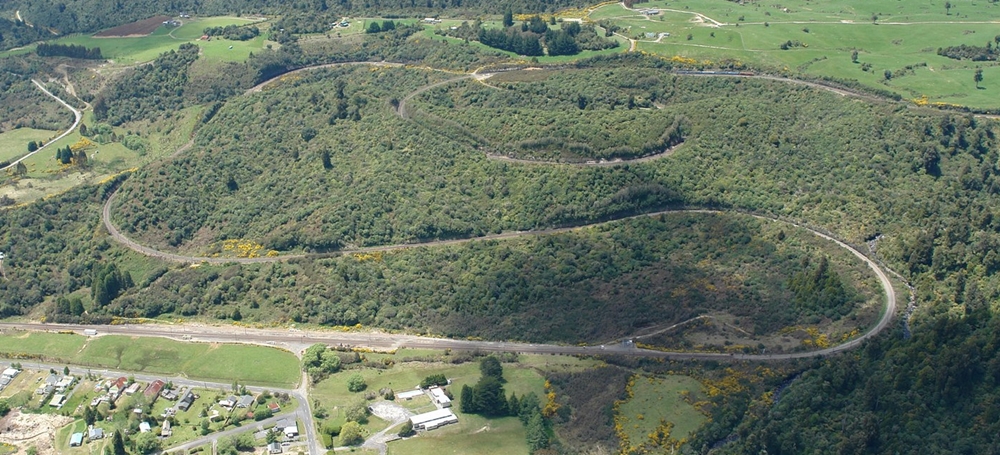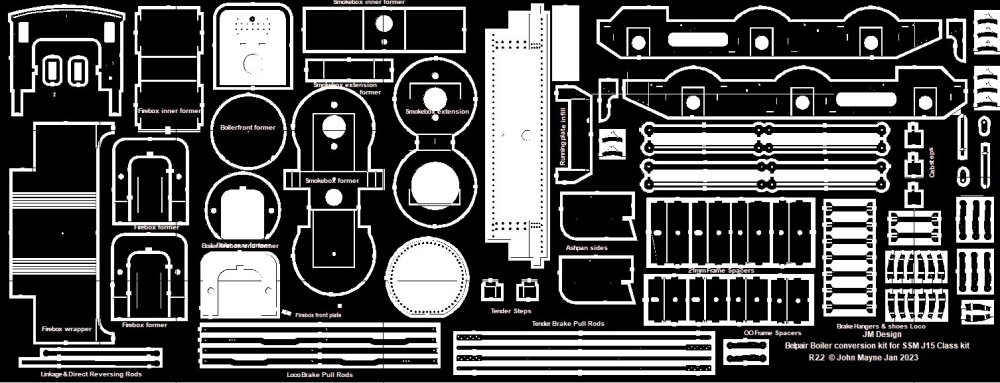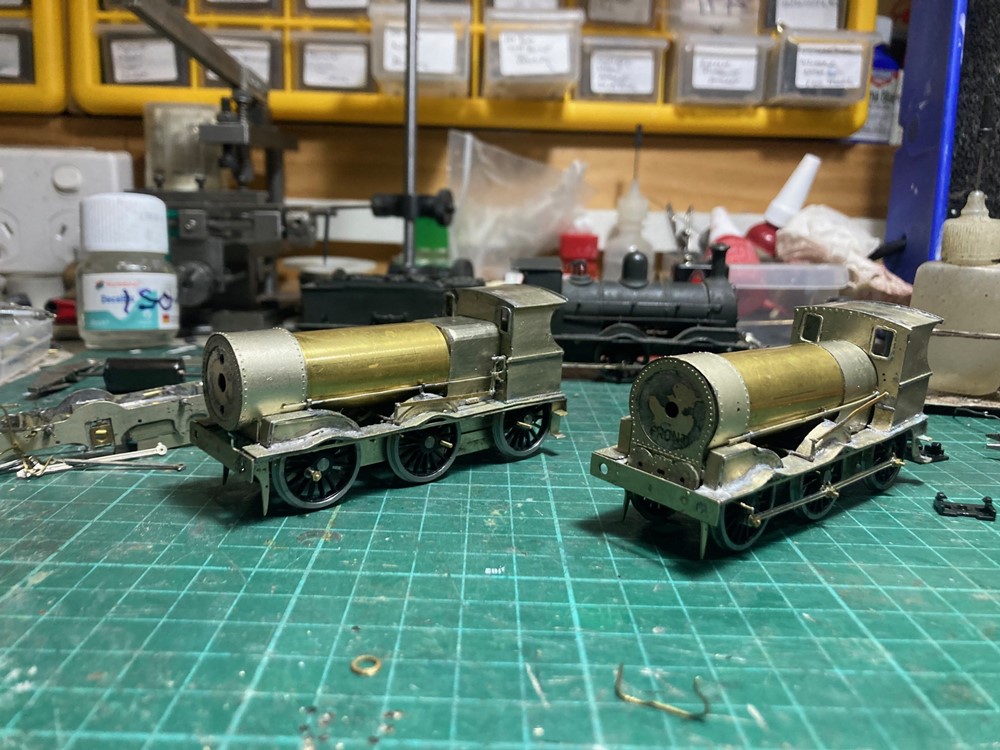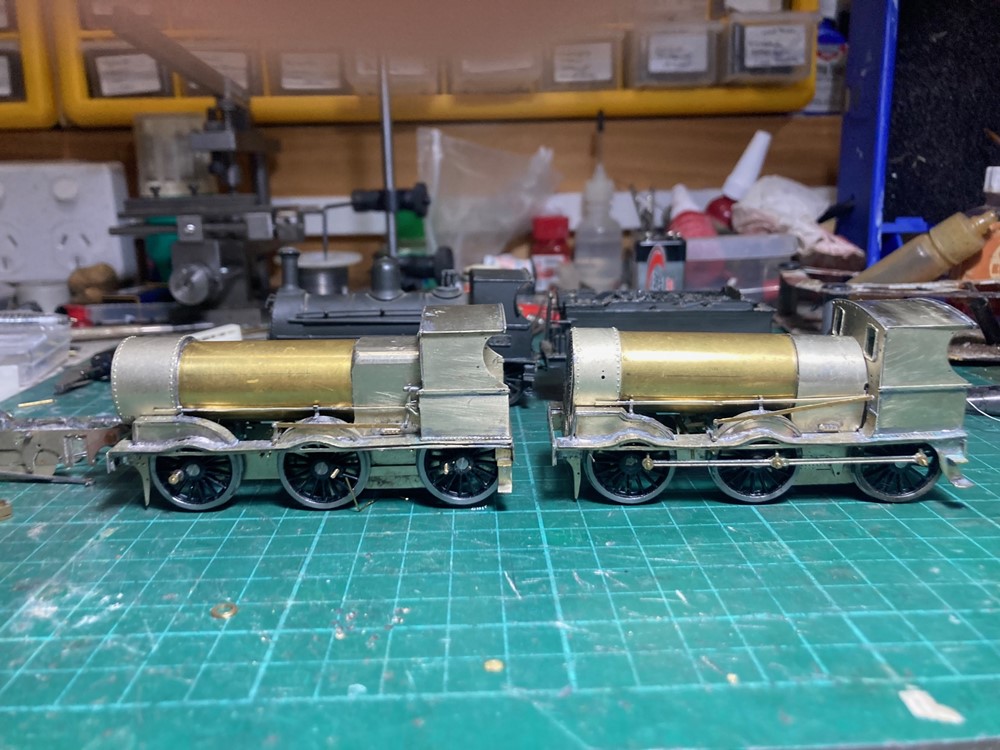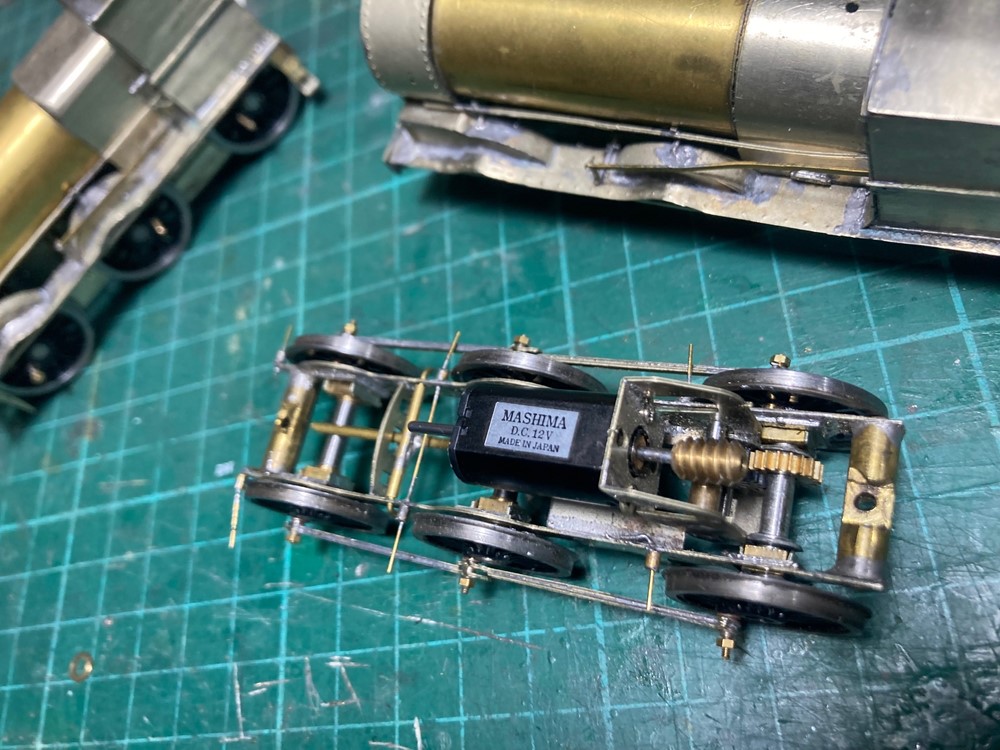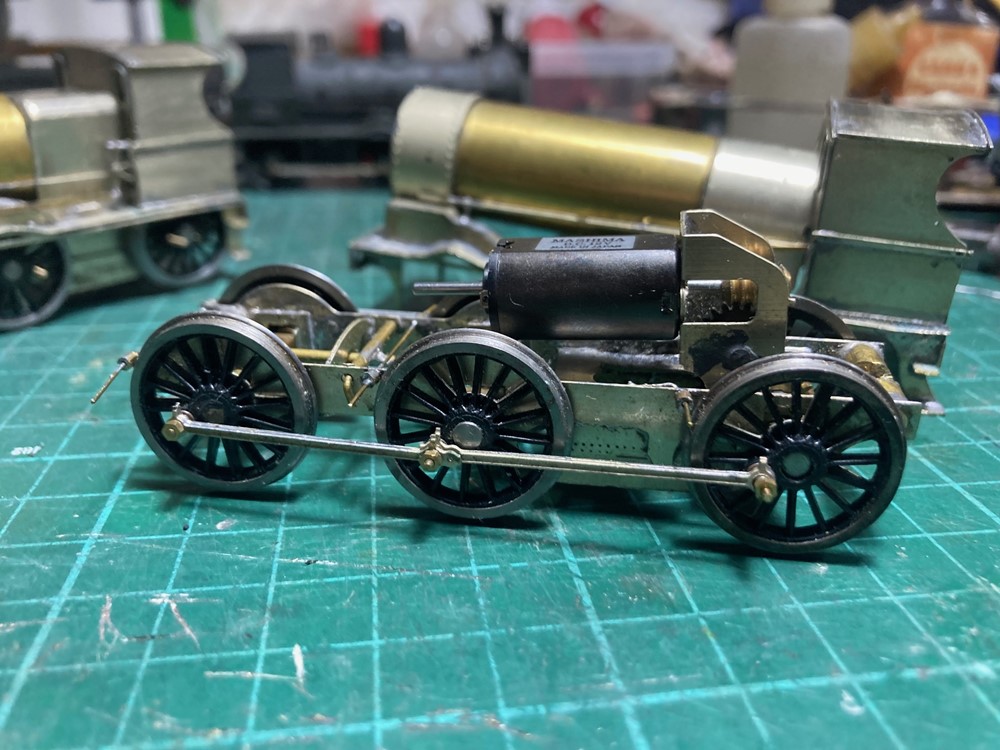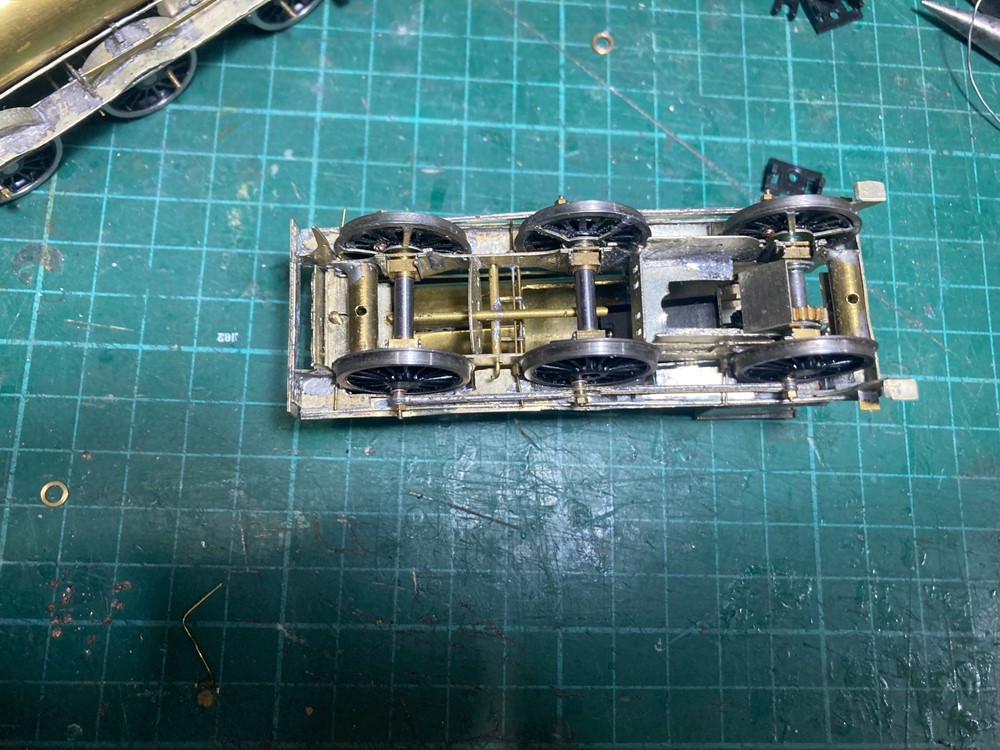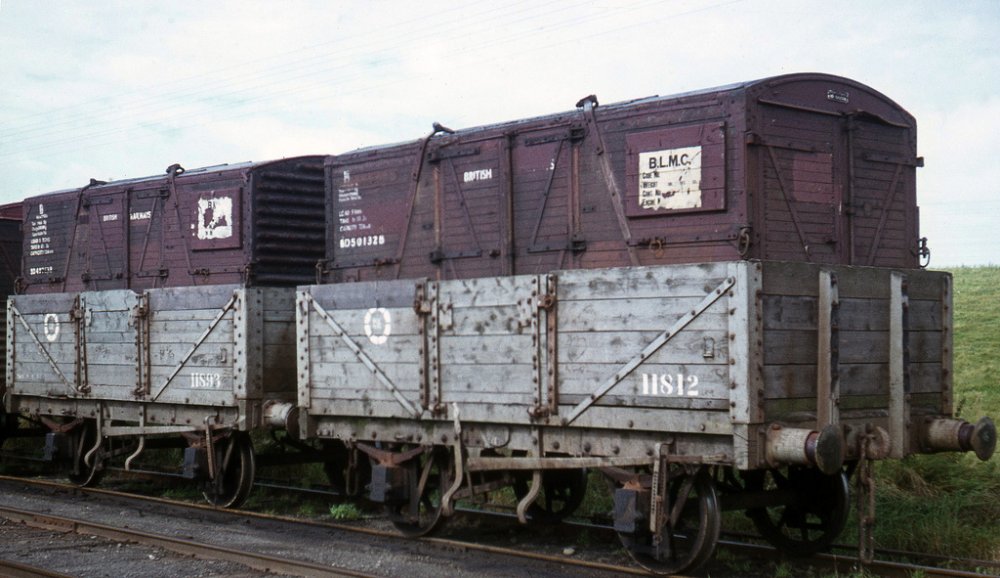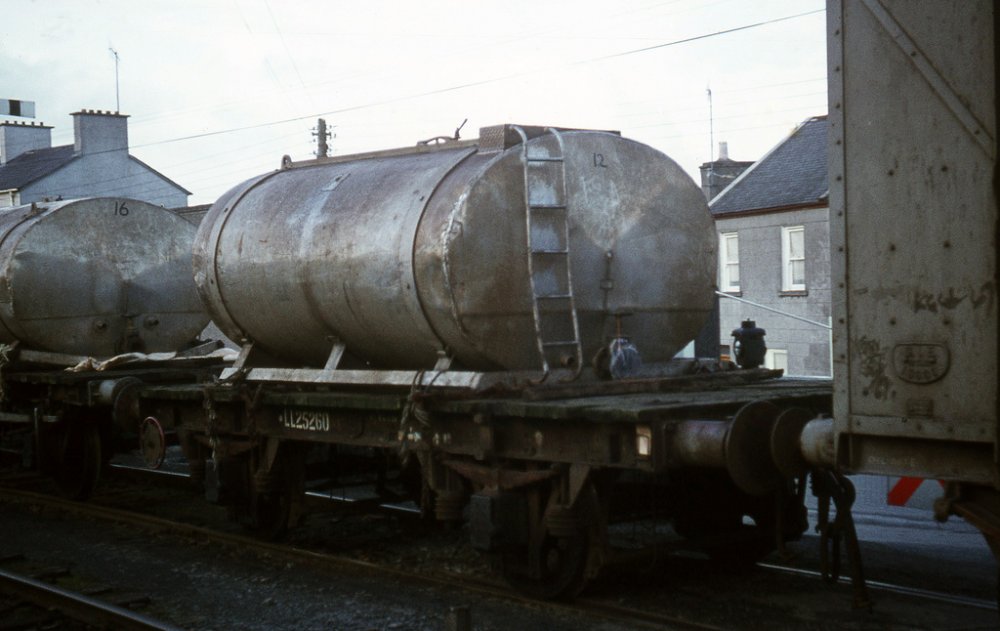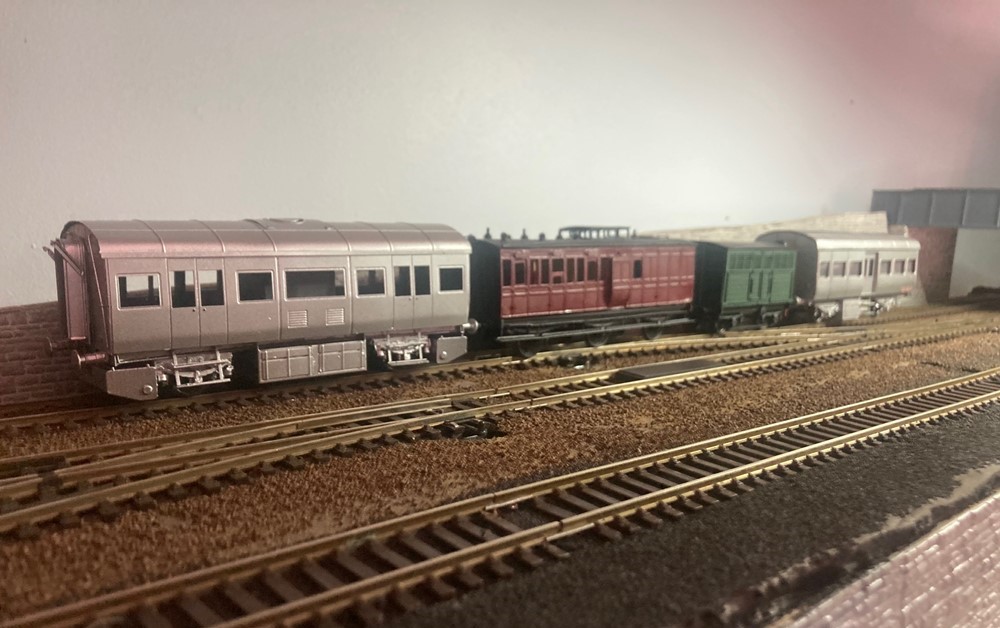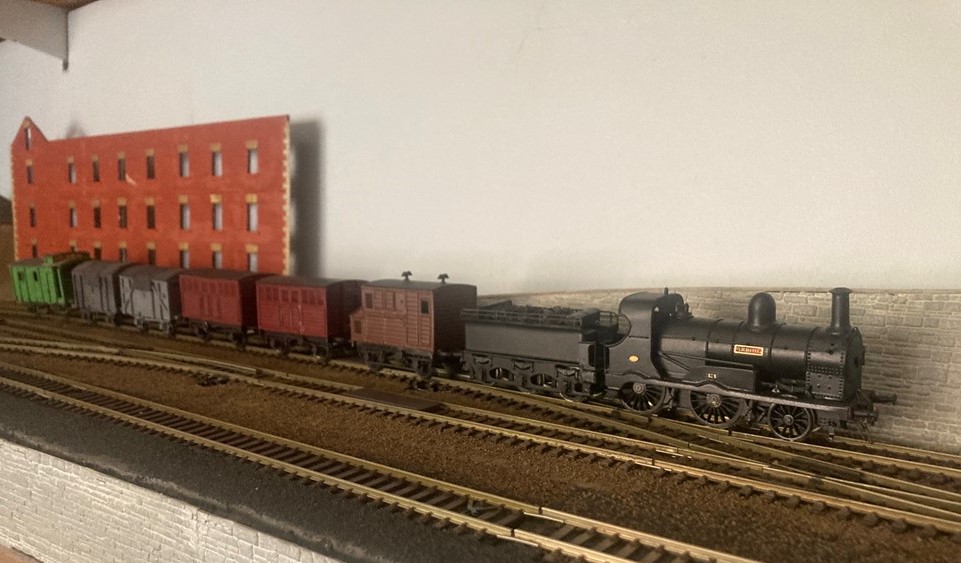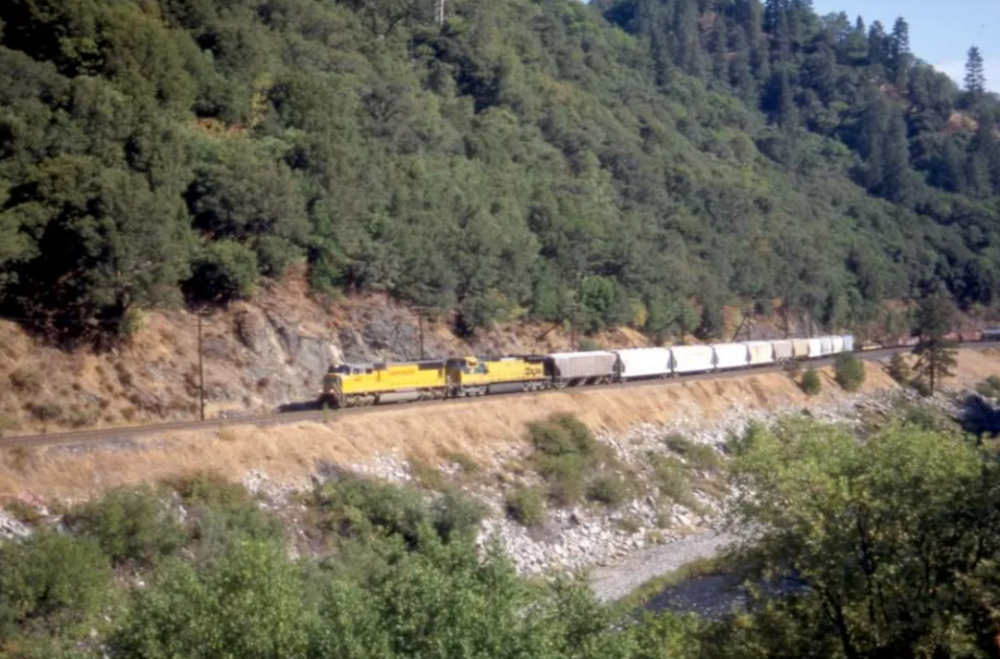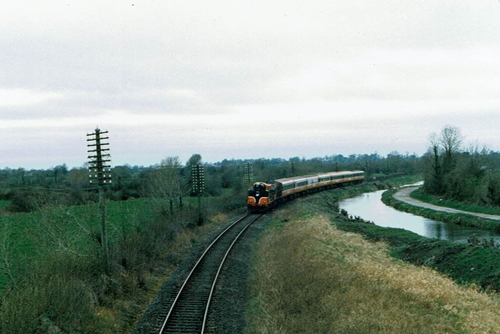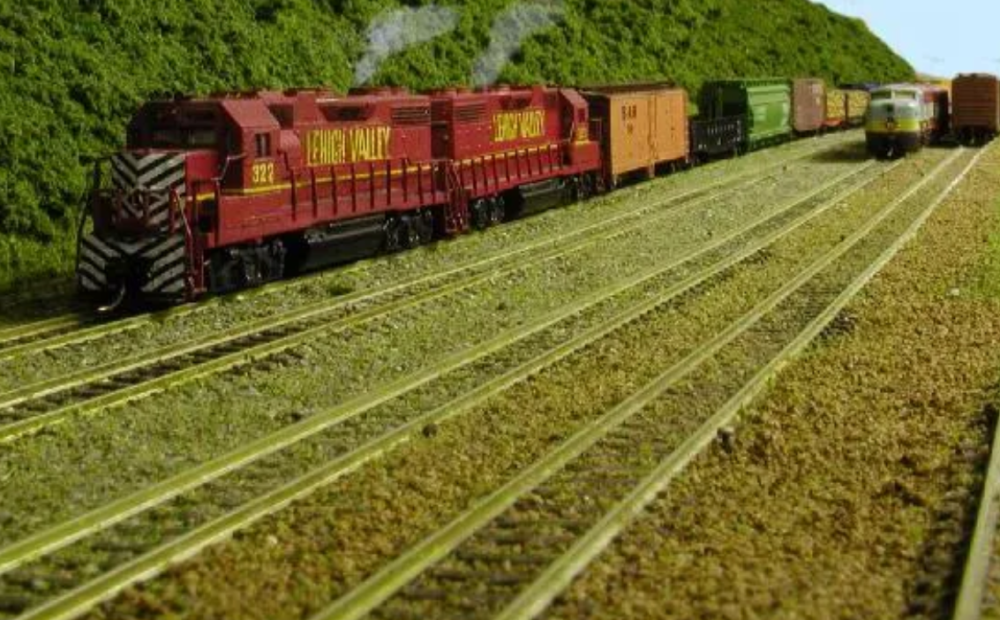-
Posts
4,848 -
Joined
-
Last visited
-
Days Won
119
Content Type
Profiles
Forums
Events
Gallery
Blogs
Store
Community Map
Everything posted by Mayner
-
An Post would have received an Electronic Customs Declaration from the Royal Mail before the item left the UK and could physically reject the package if there was a problem with the declaration. The last few years have been very profitable for the parcel delivery side of Postal Services such as an Post and Royal Mail with record parcel volumes, An Post was handling between 2.5-3million parcels weekly during 2020-1. During the past 3 years I had 3 parcels rejected out of approx. 100 shipped to Ireland and the UK through the postal service. Two were rejected as a result of errors in the declaration one as a result of a clerical error by An Post. Multi-National Logistics Companies. Courier services such as DHL Expesss, Fed Ex. TNT tend to be quicker, are considerably more expensive than Postal Services, some courier services are less reliable than the Postal Services. I had good results shipping internationally using DHL but they charge and arm and a leg, their duty and tax paid service works out a lot more expensive that simply paying the Vat and the An Post/Royal Mail Service fee upon arrival. Import Vat on gifts. Gifts greater than €45 in total value (including shipping) imported from outside of the EU are subject to Import Vat. Back in the Day; For those that do not remember the good old days before Ireland joined the EU Customs Union in 1993 the Irish Customs service were very diligent in carrying out their duties and had a fearsome reputation. Henry Forbes of the Donegal got into a major dispute with Customs when custom classed the 2 Derwent Valley Railcars imported in the 1920s as road rather than rail vehicles and would not release until the railway paid the customs duty. Customs Officers at railway stations were thorough charging duty on clothes and food imported from Northern Ireland, an Irish Customs Officer tried to charge my mother duty on a coat bought in a well known Dublin shop. Customs road blocks on the Swords Road in Santry and the North Road were common on Sunday evenings as Customs Officers checked cars returning to Dublin from Northern Ireland to establish whether the drivers or owners or NI registered cars were resident in Northern Ireland or the Republic. I was charged VAT on my first order of books from the IRRS London area during the early 80s and on locos from the States during the 90s
-

mgwr preserved railway Connemara Railway project.
Mayner replied to ttc0169's topic in What's happening on the network?
As a volunteer Guard on a UK Hertiage Railway during the 1990s many of our adult customers thought our Ruston diesels were steam locos! The vast majority of customers were family groups often with small children who wanted a short affordable train ride who had no particular interest in railways and could not recognise the difference between a small diesel shunter with a cab at one end and a small steam loco. -
To return to Richard Chown; There is a fairly comprehensive overview of the sheer scale and breath of his modelling from cameo to very large layouts in the Highland Miscellaney Blog https://highlandmiscellany.com/tag/castle-rackrent/ together with "Day Return to Castle Rackrent" & Last train to Castle Rackrent. Interestingly the basement layout was being re-configured and extended before his death with the addition of at least 3 new Block Posts/operating positions (stations, junctions or yards). There were articles on Castle Rackrent in Model Railway Journal 234 and 202. 234 "Castle Rackrent-a celebration and a challenge" (one page) Celebrates the layouts 40th year in operation and looks forward to the planned re-configuration and enlargement of the layout. 202 "Fair Day at Moygraney" provides an overview of operating the layout and includes a schematic of the running lines & block photos and colour photos of all five stations. Castle Rackrent Moygraney and Pacific featured as Railway Modeller 'Railway of the Month" in February 78, the article (black and white!) included a track plan of the original layout and its 'Extensions". The layout was modular in nature and appeared in different configurations depending on the space and the number of operators available at exhibitions and normally lived in a very large purpose built layout room.
-
Owen. Good to see your taking the initiative to produce a 3D Model of a MGWR 6w coach. The coach and window profile and paneling on MGWR 6w Atock coaches are distinctive and quite unlike that used by other Irish companies. The windows had rounded top and right angle lower corners. The MGWR used half round strip to cover the panel joints. The panel layout appears to have varied between batches of coaches as they were built at Broadstone. A number of Padraic O'Cuimin Broadstone Series (un-dimensioned) drawings of MGWR 6 wheelers are available in the Resources section of this newsgroup. The IRRS Flickr group is a good source of photos of these coaches, the IRRS published a compendium of MGWR coach GA drawings including the 6 wheelers.
-
I was lucky enough to see Richard Chown's Castlerackrent in the flesh at a small exhibition in rural Perthshire, possibly Abernethney during the 1990s and the late David Walker's Killanney layout a Yorkshire Castlerack offshoot. I met Tony Miles at a Bristol exhibition in the late 80s and was invited into the operating well of the partially completed second Advaoyle layout. Apart from his considerable technical/modelling ability effectively developing fine scale 4mm standards or P4 independently of the Model Railway Study Group, he seems to have had a great ability to recruit groups of like minded modelers to work on his two Adavoyle Layouts first on Merseyside, the Aberyswyth before finally settling in Ludlow. Richard Chown a BR engineer likewise recruited a large team to regularly operate his Castle Rackrent, basically an Irish pre-amalgamation American style operating layout with several stations which could be arranged in different format for exhibitions. I was inspired by Castle Rackrent ever since it appeared in the Modeller some time in 75-76 but never got round to building a successful Irish 5'3" gauge layout though I have managed to build a fair number of locos and stock during the last 40 odd years.
-
Settings changed so that prices for Irish, European, UK and US customers appear in the local currencies, excluding local sales taxes.
-
A (very) small number of wagons are currently in stock and available on our website https://jmdesignmodelrailways.com/ Models available include, CIE 20T Goods Brake, Bulk Grain Ranks Ireland No2, GSR/CIE Std Open wagon, LMA & GSWR/GSR/CIE planked vans. Despite a number of promising test prints, I have been unable at this stage to identify a manufacturing partner capable of consistently producing SLA (resin) prints of our wagons to a similar standard of quality to our original manufacturing partner. Currently I am working on the CAD work for a set of etched brass parts for the GSWR 2740 Gal tenders built for use with the 60 Class 4-4-0s which were sometimes coupled to 52 (D17) and 101 (J15) class locos used on long distance work and am open to expressions of interest in the Tender and possibly a set of parts for a 60 Class loco.
-
Didn't realise that you had started work on a city terminal, the photo of the B121 and A16 poking out under the footbridge and overall roof certainly captures the look of the prototype. There were plans in the early 1900s for a city center terminus off Sackville/O'Connell St similar to an American Union terminal served by all main line companies serving Dublin. It would have had to be on a compact footprint being built in an already built ud densely populated city center area. Funnily enough I worked in the Minories in the City of London during the late 1980s, in the evenings I used to travel home from Aldgate Station a compact through terminal station on the Circle Line. London Transport operated a direct limited stop peak hour services from the terminal platforms at Aldgate over the Circle Line and Metropolitan Line to Amersham, Chesham and Uxbridge, travelling at speed in LT A stock on the above ground sections of the Metropolitan Line could be an interesting and exciting experience for anyone used to the sedate progress of the DART
-
New arrival at North Wharf I treated myself to a DCC fitted Hornby Peckett for use as 'Dock Shunter" at North Wharf. In theory the yard at North Wharf is part of a dock railway complex owned by a Port and Docks Board which owns and operates its own locomotive(s) with the main line company delivering and collecting complete trains of wagons. The Peckett also turned out to be a bargain marked down to roughly half price from $280 to $140 approx €85, apparently the DCC fitted loco turned out to be a slow seller as some of the more recent non-DCC Pecketts were selling at over $300. She turned out to be a smooth runner and a strong puller, interestingly Westminister worked at Blue Circle Dunstable Cement Works a site I checked out while living in the UK during the late 80s after I developed an interest in Industrial Railways. The Dunstable (Houghton Regis) plant closed in the early 70s but was converted to a distribution depot which continued to receive cement by rail into the early 1990s with a pair of yellow diesel locomotives used for shunting cement wagons. I disposed of my collection of Blue Circle presflow wagons about 10 years ago but still have a large number of 16T BR Mineral wagons and Iron Ore Tipplers (all kit built) if (when) the BR Industrial modelling bug again bites
-
Fish traffic from Valencia Harbour is likely to have been heavy into the late 50s, the 2:30pm Valencia Harbour-Tralee 'Perishable" connected with the Night Mail with a 3:50am arrival at Kingsbridge is likely to have carried urgent fish traffic for export and the Dublin Fish Market. There was lobbying for Congested Board funding for a rail served fish pier at Valencia Harbour, but nothing happened apparently as a result of rivalry between Valencia and Kenmare interests. Fish traffic from Valencia appears to have been mainly carried in Standard IRCH wooden bodied vans (similar to Provincial Wagons std GNR van), the standard vans with some louvred examples appear in the majority of photos of the the station. MGWR Fish Vans: The MGWR vans appear to have been used to carry both meat and fish traffic, their classification varied between Fish and Meat Vans at various stages under MGWR ownership. The vans appear to have lasted into the late 1950s there is a FW Shuttleworth photo of the consist of Night Mail at Sligo which includes an ex-MGWR Fish Van and 6w TPO coupled to recently introduced Bulleid 4w vans, there is also a late 50s photo of a Fish Van at Manulla Junction. Photos in GSWR days which show single MGWR Fish Vans coupled next to the locomotive in Achill and Ballina Branch line passenger and mixed trains indicates that fish traffic originated at Achill Sound, Killala and Ballina. The consist of the Ballina Branch train was made up of a Fish Van and 3 w wheelers, the Achill Mixed a Fish Van, ex-MGWR bogie coach, 6w van, followed by a string of wagons. The etched parts for the MGWR Fish Van is available to order, some of the castings may be available from Dart Castings/MJT
-

Horse transport and boxes on the Irish rail system
Mayner replied to Colin R's topic in Irish Models
There is a 1969 photo of a Cabra-Listowel horse box special at NewCastle West in Rails through North Kerry (JHB & Barry Carse). The train is made up of ex-GSWR horseboxes (approx 15-20) topped and tailed by Bulleid 4w vans. Horse traffic by rail ceased in the early 1970s when CIE withdrew its fleet (mainly ex-GSWR) Horseboxes, the majority of Irish Horseboxes were similar in outline to the SLNCR (ex WLWR) van in Galteemores post, quite unlike the Hornby rtr model. The GSR and CIE did not build new horseboxes continuing to use pre-Amalgamation stock. Surviving ex-CBSCR, DSER, MGWR stock are likely to have been withdrawn by the late 50s I produced an etched kit of the MGWR Horsebox 7-8 years ago which was discontinued as a result of poor demand. The etched parts are available to order, while the castings may be available from Dart Castings (MJT). -
Kevin You definitely appear to be going down the architectural modelling road with models of Ballywillan, Crossdoney and Belturbet Station buildings before taking on Glanmire Road as your next project. Your existing models appear certainly capture the atmosphere of the stations modelled either in diorama form or part of an operating layout. I was inspire many years ago by an N Gauge UK exhibition layout that was basically a series of linked dioramas featuring a number of the stations on the Chester-Warrington Line in BR days. The dioramas were visually self contained scenes finished to a uniform standard with individual backscenes with tunnel mouths and overbridge's disguising the links between adjoining sections. I have a selection of slides somewhere if I can find them!
-

Hamburg Hbf and Raurimu Spiral layouts in Z Gauge
Mayner replied to Mayner's topic in Continental European Modelling
The level of interest in model railways and railways in general appears higher than Ireland, possibly similar at a similar level to the UK. The hobby is organised more on American lines with national groups who represent NZ and American outline, Garden Railway and other interests hosting regional and national conventions where modellers meet exchange ideas, play trains and visit each others layouts rather than around large exhibitions like the UK and Ireland. The New Zealand prototype and model railways are more visible with high quality NZ prototype and model magazines available in large newsagents and Hobby Shops. There is no Kiwi equivalent to MM or IRM, modellers of the New Zealand prototype are supported by a comprehensive range of kits and parts produced in the three main modelling scales (9mm, S, 120:1) by a relatively thriving cottage industry manufacturers. The New Zealand Model Railway Guild publishes a bi-monthly Journal https://www.nzmrg.org.nz/, high quality prototype magazines include the bi-monthly New Zealand Railway Observer https://www.nationalrailwaymuseum.nz/shop/the-new-zealand-railway-observer/ and the quarterly Linesider https://www.facebook.com/people/LinesiderMagazineNZ/100070985336554/. Although New Zealand has a similar population to Ireland (spread out across a landmass similar in size to the UK mainland) Kiwi's are more pro-active in terms of railway preservation with several operating heritage lines and approximately 44 operational steam locos. A lot is down to a self reliant can do spirit of the people who settled New Zealand exemplified by "Kiwi No8 wire mentality', many of the smaller groups were founded by local community groups who were prepared to get stuck and develop the necessary skills as opposed to railway enthusiasts from the big cities! -
Came across these two layouts at the Tauranga Model Railway Show this weekend, although the majority of exhibitions in this part of the World are held between June and October (Winter-Spring) the Tauranga Show is traditionally held in January with the influx of Summer visitors the the Bay of Plenty and its beaches. Besides an interesting mix of New Zealand and British outline layouts, I was particularly struck by Z gauge layouts that featured Hamburg Hbf and the Raurimu Spiral. The builders unsure if a club or private layout used selective compression and possibly perspective modelling to fit the model on a 4'X2' baseboard. The buildings and structures apparently scratchbuilt using traditional modelling techniques, a lot of activity within a small space with the lines serving the station and avoiding lines. I didn't notice the U Bahn until I downloaded the photos after the exhibition. Raurimu Station and Upper-Spiral Tunnel portal, the curved steel trestle is on a freelance continuous run section of line the line in the distance is the main line to the next station National Park Looking down from the top of the Spiral, fiddle yard in the foreground. The Raurimu Spiral layout is intended to link up with a layout featuring National Park Station/passing place on the Main Trunk Line South of the Spiral. The American 'Wild West" coaches are not unlike the older wooden bodies coaches used on New Zealand's railways into the 1970s, the F Units would pass from a distance for English Electric locos supplied during the 1950 By Duane Wilkins, CC BY 3.0, https://commons.wikimedia.org/w/index.php?curid=45826821 Again despite compression the model is a reasonable reflection of the spiral and terrain. The terrain on the spiral is mainly re-generated 'bush" or native forest with introduced (highly invasive) gorse. Raurimu was established as a Sawmill Town complete with its own 'Bush Tram" of Logging Railway following the opening of the railway in the early 1900s https://natlib.govt.nz/records/23017495?search[i][place_authority_id]=-319765&search[path]=items Currently the main land use in this area is livestock farming, but likely to revert to forestry as farming carbon credits becomes more profitable than farming sheep or drystock, spent a very interesting week in 2017 visiting farms in the area as Government inspector including a guided tour of "Raurimu Station" which includes the farmland in the background of the photo
-
I produced a test fret for converting the Studio Scale Models J15 kit into the superheated version in 2012 and have finalised the production version of the fret, largely in response to the determined prodding by a member of the group including an offer to fund/share the tooling cost of the fret. This kit is primarily intended for modellers working in 21mm or one of the wider gauges, although OO Works have announced a rtr OO gauge Superheated J15 its unlikely that the OO Works model would be suitable for conversion to a wider gauge without significant modification to the body and running gear. The design of the fret has evolved significantly during the past 11 years and now includes loco and tender brake gear parts to replace the challenging to assemble parts supplied with the TMD/SSM kit in addition to the heavier mainframes fitted to a number of superheated locos, extended smokebox and belpair boiler. The revised brake gear and my original Z boiler conversion are demonstrated in my "Gaggle of J15s" thread on this board. The kit is based on retaining the boiler tube/rolled as supplied with the TMD/SSM kit rather than the half etched boiler and firebox wrapper fitted to the JMD Y boiler 650 class, to reduce the risk of bruising/damage to a half etched wrapper during assembly. Apart from the use of full thickness components the firebox is designed on similar principals to the Y firebox as detailed in my Y/belpair boiler assembly thread. I am planning to supply the frets direct from my photoengraver in the UK in order to minimise shipping and handling costs. The fret is expected to retail at £37 excl. Vat and postage with an expected 6-8 week lead time from placing order to delivery. Please respond to this post or send a PM if you are interested in placing an order.
-
There are some photos (not great quality) of flat wagons with Guinness containers at Kingsbridge during the early-mid 1960s https://steverabone.com/RailwayPhotographs/unknown_irish_photographers.htm These containers were used for Guinness traffic to Belfast and Derry from the late 50s onwards, Provincial Wagons produced a model of the Guinness container separately and a (Dapol)?flat with two containers. The overnight North Wall-Waterside "Derry Vacuum" was hauled by MPD railcars and occasionally a WT 2-6-4T between Lisburn and Derry after the closure of the GNR(I) Derry Road in 1964 and would have included CIE container flats in the consist. There is a colour photo of a trio of MPD power cars crossing the Bann with a train of these wagons in "Diesel Dawn" (Colm Flanagan) and a WT 56 hauling the Vacuum in Irish Railways in Colour "from steam to diesel" Tom Ferris 1992. 56 is deputising for a failed MPD set, the consist is interesting with a long cut (approx) 10 container wagons leading a string of conventional open wagons, vans and brake van. The 20' flats would have been allover grey while used in revenue service as flat/container wagons.
-

M3 Parkway to Navan reopening confirmed
Mayner replied to Blaine's topic in What's happening on the network?
A good piece of positive news, I walked a section of the line near Dunsaney on a Sunday afternoon drive/walk in the country with my parents as a small child and got seriously interested in the "Meath Road" as a teenager doing my first serious piece of research taking the bus to Dunboyne to sketch the station building on my summer holidays from work in 1976. I built a 4mm model of Dunboyne station building, but scaled down to N and built a model of Kilmessan Junction based on a photo survey by Herbert Richards, because I struggled to fit a OO gauge layout in our box bedroom. I believe that its likely to happen barring any severe economic shock, the Irish Government having re-opened the lines to Pace and Middleton and quadruppling Clondalkin-Hazlehatch since 2000. Projects that were unthinkable between the 70-90s when the future of the railways was under real threat and CIE/IE struggled to get funding for all but essential maintenance and renewals (DART & MK3 project) during the 80s and early 90s. I would agree that some deviation from the existing track bed particularly to serve Dunshaughlin would be desirable, the trackbed runs largely through a rural area a deviating from the existing trackbed south of the Boyne Viaduct is un-likely to add significantly to the cost as the RPA/NTA will have to CPO the route as most of the track bead was abandoned and sold over 50 years ago. It would be difficult to make a case to re-open the Kingscourt line for gypsum traffic though there may be a case for extending the Tara Mines spur to Kells for passenger traffic. The gypsum mines near Kingscourt station were abandoned during the 80/90s and the ore was transported from Knocknacran mine (near Carrickmacross) to the railhead at Kingscourt so would still involve a road transfer, traffic from Kingscourt was relatively light by Irish standards a maximum of 400tonnes daily between Kingscourt and Platin and a second train trice weekly to Limerick in the days when 1000Ton + is considered a viable train load. Tara is likely to close within the next 7 years as the mineral reserves approach exhaustion, which places a question mark over the future of the Navan-Drogheda line especially with the re-opening of the direct line to Dublin -
Rough comparison between Ireland, New Zealand and Tasmania in terms of freight tonnage and % of freight carried by rail. Tasmania is closest to Ireland in terms of traffic carried and the size of the rail Network, in New Zealand traffic density tends to be heavier and line haul longer, in all three countries a high proportion of freight is transported for a small number (3-6) of companies. The greatest difference New Zealand and Ireland is that the majority of export traffic from food (dairy, meat) and wood processing (paper/pulp, board processing are transported by rail rather than road because of direct rail access and the long distance between the food and wood processing plants and the ports. The majority of rail served industries in New Zealand and Tasmania are large enough in scale to send out traffic by the train load (20-30 Bogies) rather than the individual wagon load, the Waterford Coillte plant exports its output of OSB board directly by sea, while none of Ireland's dairy and meat processing plants have a direct rail connection with the possible exception of Glanbia Portlaoise. Glanbia Ballyragget (the largest combined dairy plant in the EU) is probably large enough to generate train load traffic, but its unlikely that the Irish Government or Glanbia would be prepared to fund a rail connection from Kilkenny or Portlaoise to absorb the plants output. Anyway back to traffic. Ireland 0.8m tonnes annually or 1.1% of annual freight task (traffic declined from approx 3.3m tonnes between 1970-90s Tasmania 2.2m Tonnes------18% freight task mainly serves paper processing and mining industry (coal and zinc) New Zealand 19m Tonnes-----16% freight task largest shippers export dairy, paper/wood product/mining (coal and gold), export and internal intermodal logistics. Interestingly both the New Zealand and Tasmanian rail systems were privatised during the 90s and re-nationalised (bought back) in the late 2000s after the private sector operator failed to achieve an adequate return on their investment. The Irish Government would probably have to fund new locomotives and rolling stock for IE or an "Open Access" operator as the 071s are near the end of their economic life and IEs freight stock with the exception of the pocket wagons are obsolete and life expired. Following the 'buy back" it was necessary for both the Tasmanian and New Zealand government to replace the majority of their locomotive and wagon fleets as both were life expired.
-
Four years on Jan 2023 turned out to be a milestone Coey J15 229 has now a 'running' chassis and the "Superheated Loco" is on her wheels! Completing the Superheated Loco is likely to be a more longer term project than 229 mainly because some of the parts were used in completing 193 and other locos and I am not quite satisfied with the firebox and mainframes. Fitting the High Level "Load Hauler Compact" gear boxes to the J15 chassis even in 21mm gauge has been challenging as a result of a combination of the wider than normal width of the gearbox and my preference for using hornblock rather than top hat bearings to the driven axle. It was necessary to narrow the width of the hornblock bearings to allow the wheel set to fit which in-turn rules out the use of a CBS (continuous beam suspension) with a Load Hauler gearbox as originally intended for the "Superheated Loco". The Load Hauler's are wider than Road Runner and other High Level Gearboxes as a result of the double reduction gearing used in these locos which provided options of 60:1,80;1 and 108:1 gear reduction, the box fitted to the loco appears to be an 80:1 box a similar reduction to the Branchlines Slimline gearbox I fitted to 191 c 1994-5. In contrast the Road Runner+ gearboxes are available in 35:1 (express passenger), 45:1 & 60:1 Mixed Traffic, Slow Passenger/Suburban). 229 is fitted with a Mashima 10X24 motor which should result in similar running characteristics to 191, though 193 should be a tad faster. I cut a slot in the ashpan frame spacer of 229 for a Road Runner + gearbox similar to that fitted to 193 before realising the Load Hauler was wider! I will probably complete the assembly of 229 before progressing further with the Superheated loco and tender both to use up my stock of parts and see what's missing and to make a decision on the Superheated locos mainframes and suspension. I have designed a revised superheated J15 conversion etch with a revised main frame and firebox design based on my experience with the Y boiler 650 Class 2-4-0 with the superheated loco a suitable guinea pig. I am also planning to build a model of the larger 2730 gal tenders built for use with the 52 and 60 Class 4-4-0 which were also used with J15s on long distance goods trains including 229 on the Sligo-Limerick goods, so the project could run for a while yet!
- 58 replies
-
- 10
-

-
For many years running construction sites one of my main roles was checking and reviewing architectural and engineering drawings before and as work progressed. On speculative housing projects it was basically a case of working with the trades on site to make sure everything fitted correctly before starting work on site. On commercial and public sector projects advising the client and design consultants on "Buildability" and "Value Engineering" (saving money) was part of our role as project manager and lead contractor. Design amendments such as the gable end windows were likely to have been recorded in a "site instruction" from the Engineer or Clark of Works to the contractor or builder, rather than a revision to an engineering or architectural drawing. One of the foreman or site managers main roles was maintaining a record of site instructions from the Engineer, Architect or Clark of Works in order for the quantity surveyor to claim for extras and variations. In the days of paper based records a large project could generate a 20' container load of "requests for instruction" and ISO 9000 quality assurance documentation from the "Builders" and "site instructions" from the design team. Some days I spent 80% of my time processing queries or "RFI" from the contractors and "SI"s from the design team and about 20% of my time on site with my own team and contractors
-
The GNR(I) & NCC built purpose built flat wagons for Bread Container traffic from the 1930s onwards Jeremy Suter produced a single run kit of these wagons about 20 years ago. CIE appears to have carried the older style containers in open wagons, before developing purpose built 20' Flat wagons for container traffic during the 1960s. The GNR and later CIE introduced aluminium bodied containers similar in outline but larger than the BR containers for Donegal freight traffic passing under customs bond through Northern Ireland BR containers in IRCH standard open wagons Studio Scale Models produce a whitemetal kit of the wooden underframe version of the open as seen in the photo. Industrial Alcohol containers on 20'-11'wb-12T capacity flats. These wagons were introduced for container traffic (including Guinness 3 containers) during the early 60s, but converted to PWD use following the introduction of 20'-12'wb-20T flats during the mid 1960s. The above photos were originally published on photo sharing site, I don't know the identity of the original photographer. 20'-11'wb container flat converted for PWD use. The Airfix/Dapol Cattle Wagon chassis would be reasonably close for one of these wagons.
-
Spray can ran out painting HLV, "Bare Metal Silver out of stock in local hobby shop but expected at some stage next week. Model consist inspired by F W Shuttleworth photos of " Night Mail" at Sligo in the Summer of 56, the original consist included an ex-MGWR 6W TPO dating from the 1880s and and ex-MGWR Meat/Fish van. a GSWR 3rd brake filling in for the photo of the model. An ex-MGWR 2-4-0 appears to have made up the train at Sligo during Shuttleworth's visit with an A Class hauling the train to Mullingar and a connection with Galway-Dublin Night Mail. I haven't a 2-4-0 in CIE condition, so No 33 Arrow in late MGWR condition posed with the "Perishable" made up mainly of ex-MGWR stock carrying urgent traffic. I will probably remove the "Capacity Load" information from the luggage van the backing film is quite noticeable and does not appear to have been used before the "black and tan' era. Mixed consists of ancient and newly introduced stock appears to have been fairly common during the late 50s, there are excellent photos of a Rosslare Harbour-Wexford Mixed in Alan Burges "Chasing the Flying Snail: the passenger accommodation is made up of a 4w Bullied Luggage Van, and ex MGWR 6w 3rd and an ex GSWR bogie Clearstory Brake Composite, hauled by a large Coey 4-4-0
- 392 replies
-
- 11
-

-
Before deciding whether its worthwhile weathering N Gauge models its best to consider the level of weathering/dirt visible on a loco and stock at normal viewing distance. American diesels seldom look weathered or dirty at normal viewing distance in N. Pride in corporate image and climate helps! Similar climatic conditions and maintenance/cleaning regime to Ireland. Otira Tunnel banking locos leading consist, pilot trains through a 5¼ mile tunnel and after a short time become dirtier than locos working over the Midland Line from the Westland to Christchurch Early 90s Sligo-Dublin reasonably clean 121 moderately weathered 141, clean coaches N Gauge diesels custom painted finished with satin lacquer (both aerosol) stock un-weathered
-
Its all relative the halfpenny looking down on the farthing. Growing up in Crumlin I was always reminded that many of us were originally from the Northside or in Brendan Behan's immortal words about being forced to move from Rutland Street to Kildare Road "to hell or Kimmage" My mother was from the North Innercity whose family considered D12 as out in the Country, my father's family from Mayo who gradually migrated eastwards as time changed from the 1920s. In the end I met a strange lady who took me in and we moved far-far away though I don't eat Vegemite.
.png.c363cdf5c3fb7955cd92a55eb6dbbae0.png)


